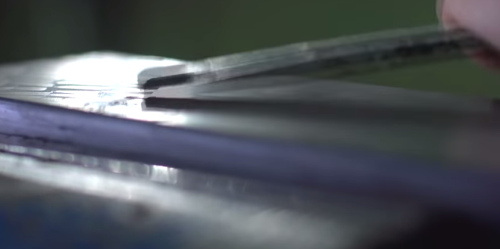Secrets to the Art of Hand Scraping
Hand scraping of mating surfaces on a machine tool enables the surfaces to be flatter, more accurately aligned, longer wearing and freer to glide across one another. No automated or mechanical operation can match these benefits. Machine builder Okuma explains how this seeming paradox is true.
Share





Watch this video for a demo of the hand scraping process, and find a link below to a white paper on the topic.
Hand scraping of mating surfaces on a machine tool enables the surfaces to be flatter, more accurately aligned, longer wearing and freer to glide across one another. No automated or mechanical operation can match these benefits. Machine builder Okuma has issued a white paper detailing the benefits of hand scraping, at technique it applies to all of its machines.
The company contends that hand scraping maintains high levels of CNC machining accuracy and reduces wear and tear, resulting in a long, stable and productive life for the machine. This manual process ensures that tight tolerances are consistently maintained and that precision CNC machining performance is sustained for years, therefore yielding the lowest cost-per-part, the company says.
In a nutshell, the hand-scraping difference accounts for four main benefits.
- Accuracy - Scraping is done to align components within millionths of an inch, allowing for consistently-held, tight tolerances.
- Flatness - Contact points prevent rocking, add balance when tightening, and allow for true flatness in parts.
- Oil Pockets - Oil on the surface allows gliding motion.
- Appearance - The finishing touch of scraping is aesthetic. Parts are “design scraped” to achieve an attractive textured finish.
To download a copy of the white paper, click here.

Related Content
-
CNC Machine Shop Honored for Automation, Machine Monitoring
From cobots to machine monitoring, this Top Shop honoree shows that machining technology is about more than the machine tool.
-
5 Tips for Running a Profitable Aerospace Shop
Aerospace machining is a demanding and competitive sector of manufacturing, but this shop demonstrates five ways to find aerospace success.
-
How to Determine the Currently Active Work Offset Number
Determining the currently active work offset number is practical when the program zero point is changing between workpieces in a production run.






















.jpg;maxWidth=300;quality=90)

